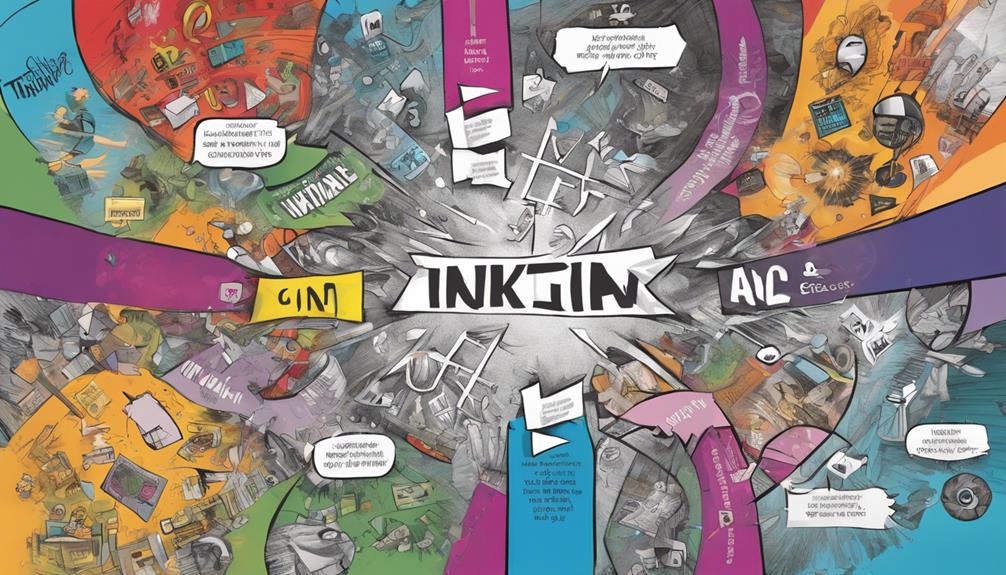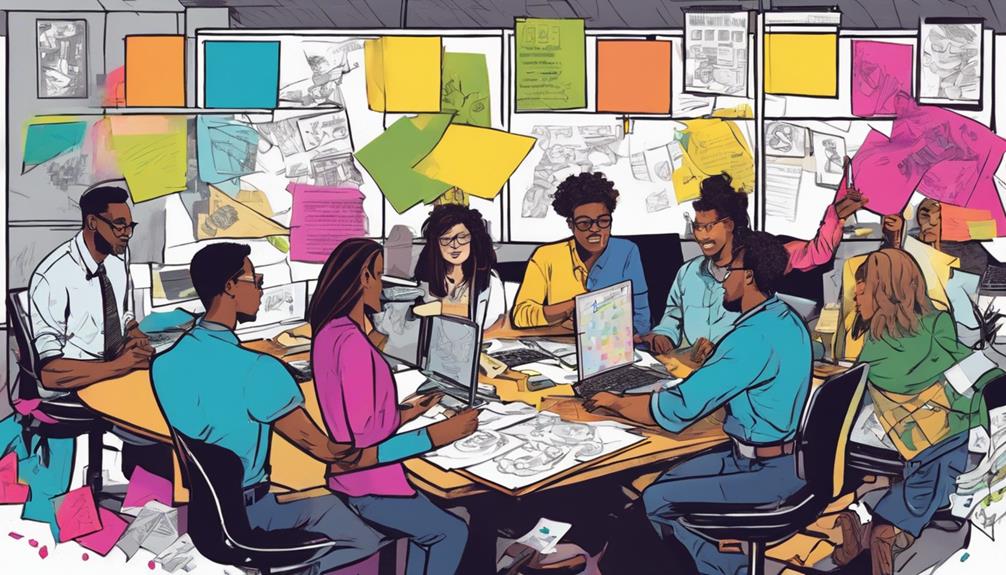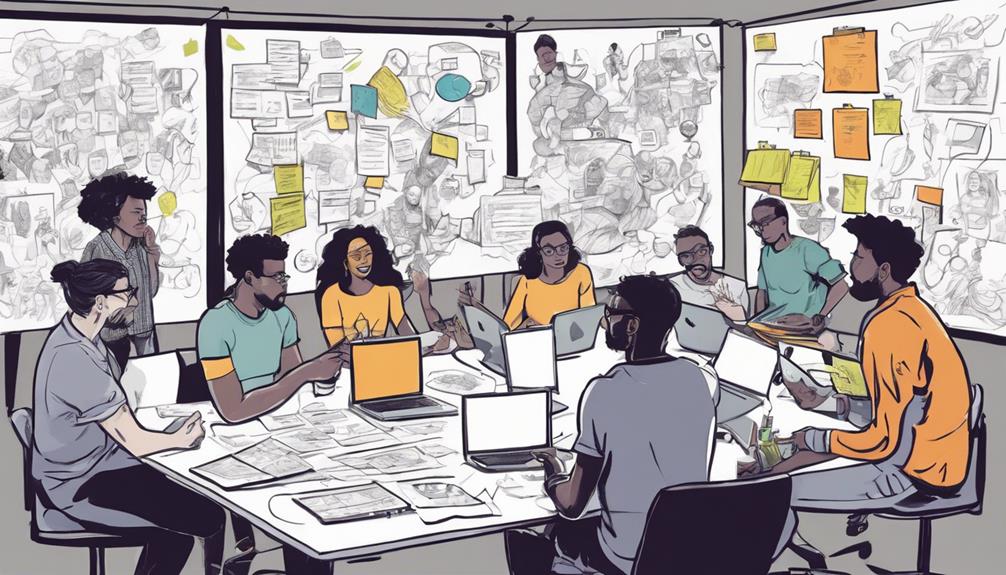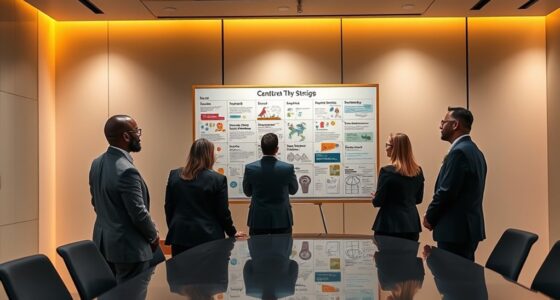If you're wondering whether Design Thinking is just a fancy name for the Agile Manifesto, the truth is they are distinct methodologies. Design Thinking focuses on understanding user needs and fostering creativity, while Agile emphasizes iterative software development and team collaboration. By examining the differences, you'll gain a deeper understanding of how each approach offers unique benefits. Explore further to uncover how Design Thinking and Agile can complement each other to enhance the overall project outcomes.
Key Takeaways
- Design Thinking and Agile are distinct methodologies with unique focuses and principles.
- Design Thinking emphasizes user empathy and problem-solving, while Agile centers on iterative software development.
- Design Thinking is not another name for Agile Manifesto; they serve different purposes.
- Understanding the differences between Design Thinking and Agile is crucial for leveraging their strengths effectively.
- Both Design Thinking and Agile can complement each other when applied in the right contexts.
Key Differences Between Design Thinking and Agile
Design Thinking and Agile differ in their approach to problem-solving and product development methodologies. Design Thinking focuses on understanding user needs through techniques like empathy interviews and observation, aiming to uncover latent user needs and desires.
Agile, on the other hand, emphasizes iterative development and delivery of working software, focusing on delivering value to customers through incremental enhancements.
In terms of use cases, Design Thinking is often used in the early stages of product development to ideate and prototype innovative solutions, while Agile is commonly employed during the execution and delivery phases to guarantee continuous improvement and adaptation.
Additionally, Design Thinking encourages cross-functional collaboration by bringing together diverse perspectives from different disciplines to foster creativity, while Agile promotes collaboration between business stakeholders and development teams to ensure alignment and effective decision-making.
These differences highlight the unique strengths of each methodology in addressing various aspects of the product development process.
Misconceptions About Design Thinking and Agile
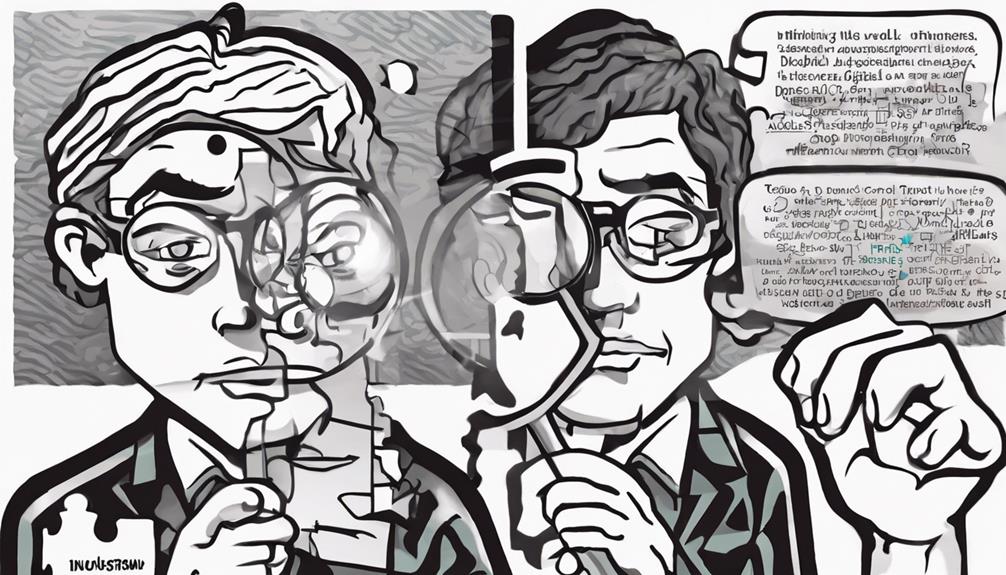
Misconceptions about Design Thinking and Agile often arise due to a lack of understanding of their unique methodologies and how they complement each other in the product development process. Some may mistakenly believe that Design Thinking and Agile are interchangeable concepts when, in fact, they serve different purposes. Design Thinking focuses on empathizing with users, creatively solving complex problems, and deeply understanding user needs.
On the other hand, Agile revolves around iterative software development, efficient delivery of working software, and fostering collaboration within teams.
One common misconception is that Design Thinking is solely about creativity and innovation, while Agile is only concerned with delivering products quickly. However, both methodologies share a customer-centric approach but emphasize different aspects of the product development cycle. Understanding these distinctions can help teams leverage the strengths of both Design Thinking and Agile to create impactful and user-oriented solutions efficiently.
Benefits of Design Thinking Over Agile
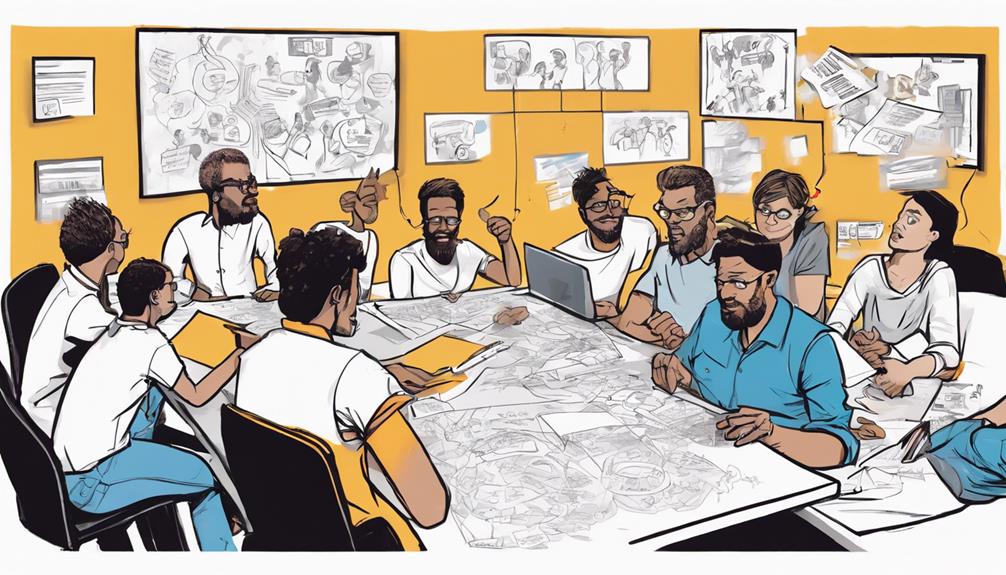
You'll find that Design Thinking brings advantages such as:
- Emphasizing user empathy
- Fostering collaboration among team members
- Promoting rapid prototyping
Understanding how Design Thinking compares to Agile and implementing its principles can lead to more human-centered and innovative product development.
Consider exploring the benefits of Design Thinking over Agile to enhance your approach to problem-solving and product design.
Design Thinking Advantages
When comparing Design Thinking to Agile, one key advantage lies in its strong emphasis on empathizing with user needs. Design thinking prioritizes understanding and addressing user requirements at a deep level, ensuring that solutions are truly tailored to meet user expectations. This user-centric approach fosters innovation by focusing on creating meaningful experiences that resonate with the end-users.
Another advantage of Design Thinking over Agile is its encouragement of creative problem-solving through iterative processes. By promoting divergent and convergent thinking, Design Thinking allows for the exploration of multiple solutions before converging on the best approach. This complements Agile's iterative development methodology, enhancing the overall problem-solving capabilities of the team.
Furthermore, Design Thinking's human-centered approach aligns well with Agile's value of customer collaboration. By placing a strong emphasis on user experience and feedback, Design Thinking enhances Agile's focus on ensuring customer satisfaction throughout the development process. Additionally, the incorporation of user feedback helps in refining solutions iteratively, aligning with Agile's adaptive and responsive nature.
Agile Vs Design Thinking
Design Thinking surpasses Agile in its emphasis on grasping user needs and fostering creativity in problem-solving. While Agile concentrates on iterative software development processes and delivering operational software quickly, Design Thinking goes beyond that by advocating empathy, human-centered design, and innovative solutions. By prioritizing user needs and experiences, Design Thinking ensures that the final product genuinely tackles the issues at hand.
Moreover, Design Thinking encourages creativity and out-of-the-box thinking, allowing teams to explore a wide range of possibilities before settling on a solution. This approach can lead to more unique and impactful outcomes compared to the more structured nature of Agile.
In essence, Design Thinking's focus on empathy, creativity, and human-centered design sets it apart from Agile's emphasis on collaboration and adaptability in project management. By incorporating Design Thinking principles into your process, you can discover new opportunities for innovation and user satisfaction that Agile alone may not fully utilize.
Implementing Design Thinking
Implementing Design Thinking can revolutionize your approach to problem-solving by prioritizing user needs and fostering creativity in solution development.
Unlike Agile, which focuses on iterative development and collaboration, Design Thinking puts a strong emphasis on understanding user needs and generating innovative solutions.
By incorporating empathy and creativity into problem-solving, Design Thinking complements Agile's flexibility and adaptability.
One of the key benefits of Design Thinking is its human-centered approach to product development, resulting in more user-centric solutions compared to Agile.
Additionally, Design Thinking involves early prototyping and testing of ideas, aligning with Agile's principles of frequent delivery and feedback.
By combining Design Thinking with Agile practices, teams can harness the strengths of both methodologies for a more all-encompassing approach to product development.
This integration allows for a holistic process that not only meets user needs but also fosters innovation and adaptability in the solution development journey.
Challenges in Implementing Design Thinking Vs. Agile
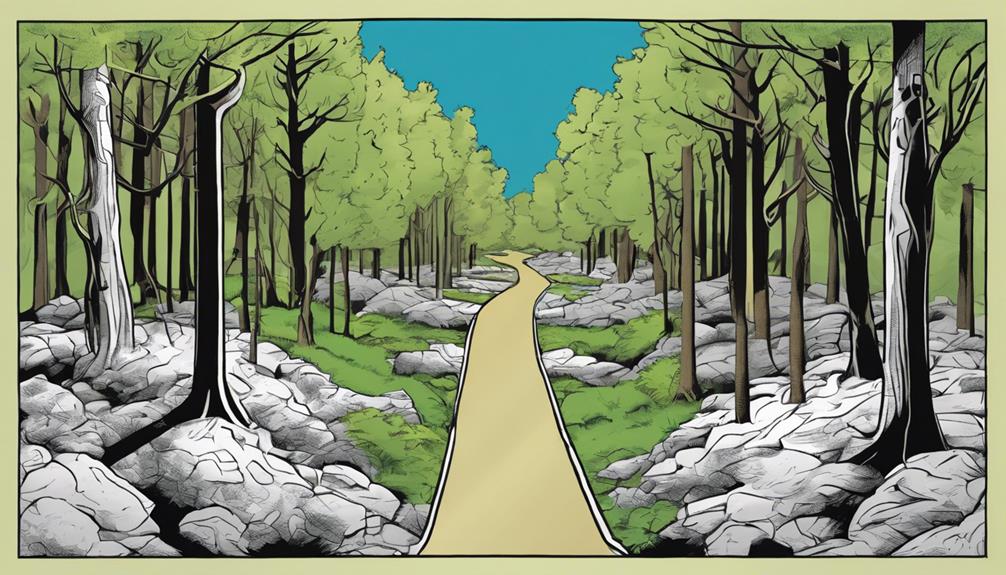
You'll encounter challenges when implementing design thinking compared to Agile, especially in the domain of team collaboration dynamics.
The differences in approach between the two methodologies can lead to friction during the transformation phase.
Understanding these implementation challenges can help you navigate the complexities of merging design thinking with Agile practices.
Implementation Challenges Comparison
Challenges in integrating Design Thinking and Agile methodologies often stem from similar hurdles in organizational buy-in and cultural transformation. Both approaches face resistance from stakeholders and employees who may be hesitant to embrace new ways of working.
Scaling Design Thinking and Agile across large organizations can be challenging, requiring a shift in mindset and culture that may not happen overnight. Cross-functional collaboration is essential for both methodologies, necessitating the breaking down of silos within teams.
The need for buy-in and cultural transformation are shared challenges that Design Thinking and Agile practitioners encounter. Overcoming these obstacles involves clear communication, demonstrating the benefits of the methodologies, and fostering a supportive environment for experimentation and innovation.
Differences in Approach
When comparing the challenges in implementing Design Thinking versus Agile, the differing approaches become evident. Design Thinking requires a shift towards empathy and creativity, potentially challenging existing organizational cultures. On the other hand, Agile implementation focuses on iterative development processes, emphasizing adaptability to changing requirements.
| Design Thinking Challenges | Agile Challenges |
|---|---|
| Shift in organizational culture towards empathy and creativity | Shift to self-organizing teams |
| Need for cross-functional collaboration | Adapting to changing requirements |
| Emphasis on divergent thinking for exploring multiple solutions | Focus on iterative development processes |
| Emphasis on empathy-driven design solutions | Emphasis on collaboration and quick adaptability |
| Willingness to embrace uncertainty | Challenges in adopting Agile methodologies |
Team Collaboration Dynamics
Implementing design thinking and Agile methodologies present distinct challenges in fostering effective team collaboration dynamics.
While Agile focuses on daily collaboration between business people and developers to achieve rapid software delivery, design thinking emphasizes interdisciplinary teamwork with a deep understanding of user needs.
This difference in emphasis can lead to conflicts in team dynamics as Agile values self-organizing teams, while design thinking prioritizes empathy, ideation, and prototyping in the creative process.
The iterative nature of Agile may clash with the more exploratory approach of design thinking, requiring a delicate balance to ensure efficient collaboration.
Design thinking's emphasis on research and exploration for user-centric solutions can potentially extend project timelines, impacting Agile's quick delivery goals.
Finding a middle ground that integrates the strengths of both methodologies while ensuring these contrasting principles is essential for fostering effective team collaboration dynamics in projects that combine design thinking and Agile practices.
Revisiting Agile and Design Thinking Principles
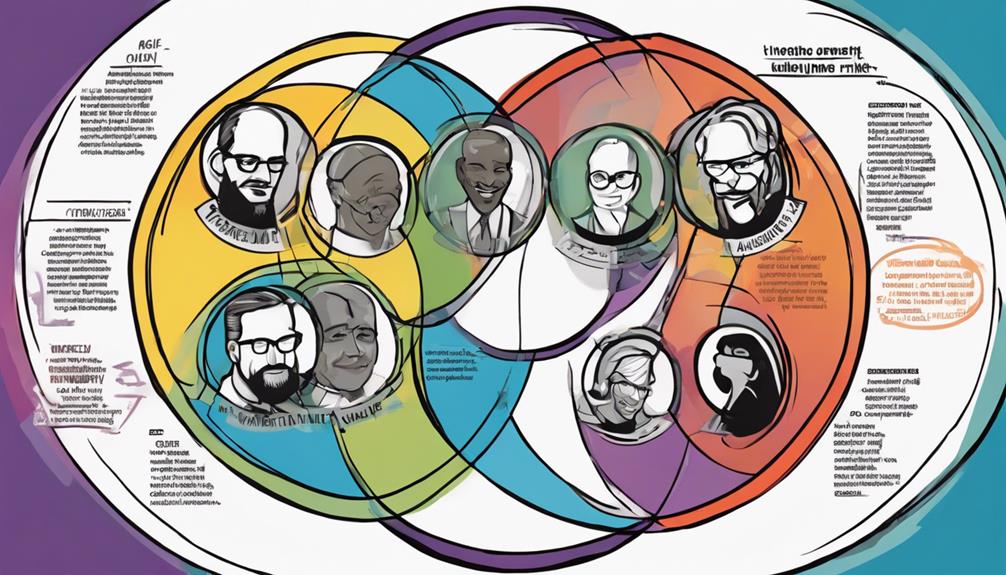
Comparing the foundational principles of Agile Manifesto and Design Thinking reveals the complementary nature of their approaches to problem-solving and innovation. Agile Manifesto, with its focus on software development, emphasizes customer collaboration and responding to change. On the other hand, Design Thinking centers on problem-solving and innovation through empathy, ideation, and prototyping.
While Agile prioritizes working software and customer satisfaction, Design Thinking promotes creative problem-solving in various fields. Both methodologies advocate for iterative processes and value customer feedback. Agile Manifesto provides guiding principles for software development teams to deliver high-quality products efficiently, while Design Thinking offers a structured framework for tackling complex problems creatively.
Real-world Applications of Design Thinking and Agile
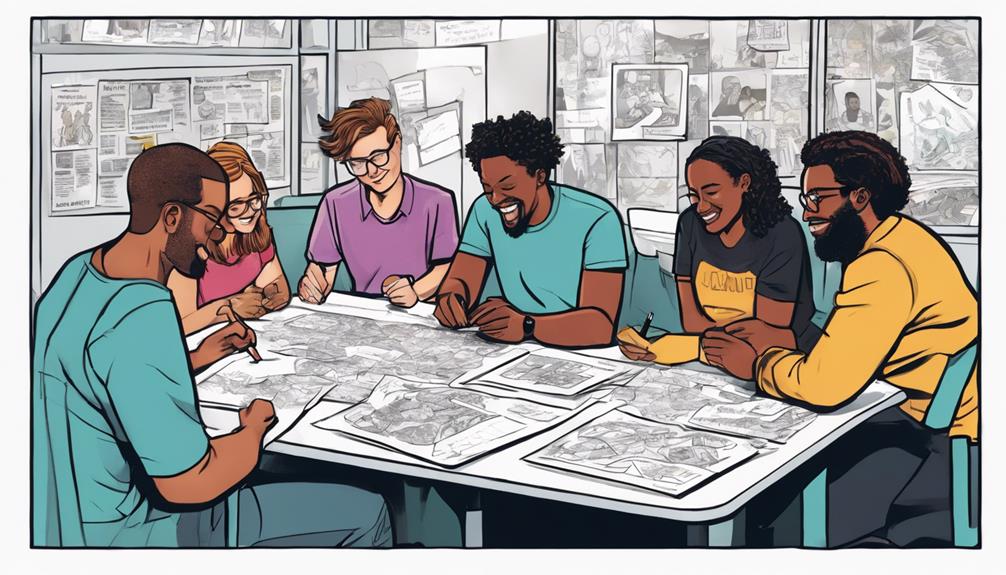
Explore how Design Thinking and Agile methodologies are applied in real-world scenarios to drive innovation and solve complex problems efficiently.
In real-world applications, organizations combine the principles of design thinking and Agile to tackle challenges effectively. Here are some examples of how these methodologies are utilized:
- Cross-functional Teams: Organizations form diverse teams comprising individuals with various skill sets to foster collaboration and creativity.
- Prototyping and Testing: Through rapid prototyping and user testing, teams gather feedback early in the development process to refine solutions iteratively.
- Customer-Centric Approach: By placing the end-user at the center of decision-making, teams make sure that the solutions address real user needs effectively.
Recommendations for Integrating Design Thinking and Agile
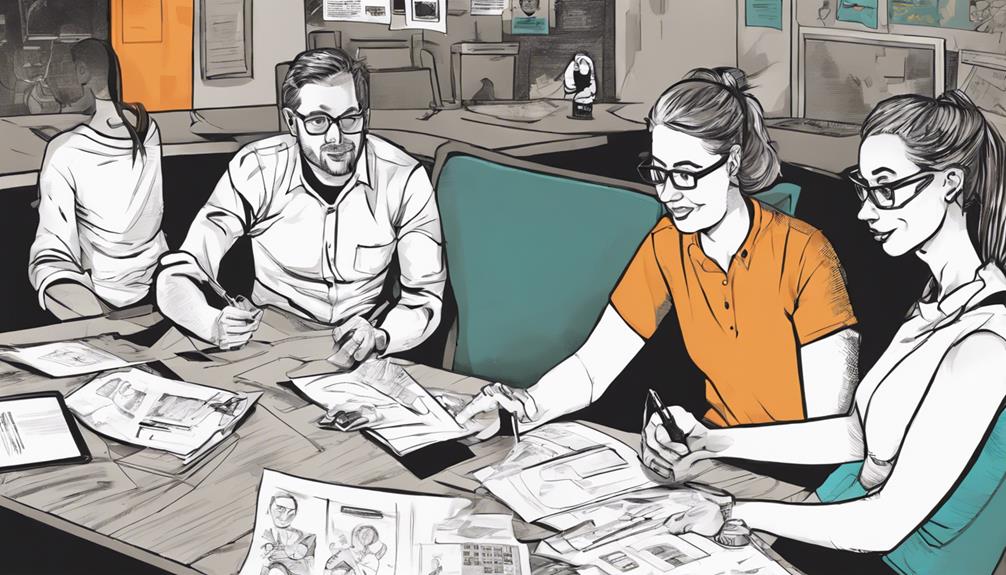
To successfully integrate Design Thinking and Agile, focus on harmonizing user-centric design principles with iterative development processes. By combining the empathy-driven approach of design thinking with the iterative and incremental nature of Agile, you can create a powerful framework for innovation and product development. Here are some practical recommendations for seamlessly blending these methodologies:
| Design Thinking | Agile |
|---|---|
| Emphasizes empathy | Focuses on incremental delivery |
| Prioritizes problem definition | Values continuous improvement |
| Encourages ideation | Supports rapid iterations |
| Advocates prototyping | Promotes collaboration |
Frequently Asked Questions
Is Design Thinking Another Name for Agile Manifesto?
Design Thinking is not another name for Agile Manifesto. Each has distinct focuses: user empathy and innovation for Design Thinking, iterative software development for Agile. Understanding their differences helps in selecting the right approach for projects.
What Is Another Name for the Agile Manifesto?
Another name for the Agile Manifesto is the Manifesto for Agile Software Development. It outlines key principles prioritizing customer satisfaction through early software delivery, embracing changing requirements, delivering working software frequently, and promoting collaboration between business people and developers.
Is Design Thinking Another Name for Azhar Manifesto?
No, Design Thinking is not another name for the Agile Manifesto. They are distinct methodologies in software development. Design Thinking prioritizes user-centric problem-solving, while Agile focuses on iterative software development practices. Both can complement each other effectively.
What Is Design Thinking in Agile?
Design thinking in Agile involves a human-centered approach to problem-solving, focusing on empathy, ideation, prototyping, and testing. It integrates creative thinking and user-centric design, allowing teams to deliver innovative solutions that prioritize user experience.
Conclusion
To sum up, while design thinking and agile share some similarities, they aren't interchangeable.
Design thinking focuses on empathy and creativity, while agile prioritizes adaptability and collaboration.
To truly harness the power of both approaches, it's important to understand their unique strengths and integrate them effectively.
So, don't judge a book by its cover – embrace the best of both worlds and watch your innovation soar!
